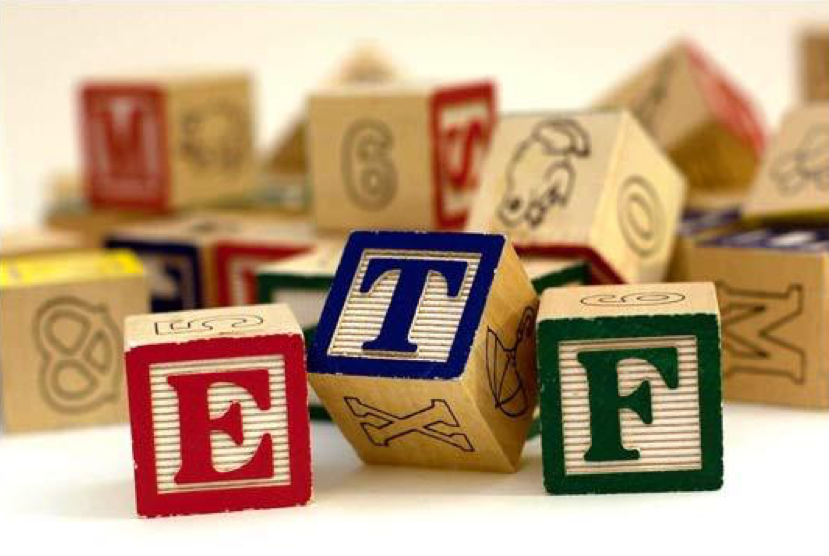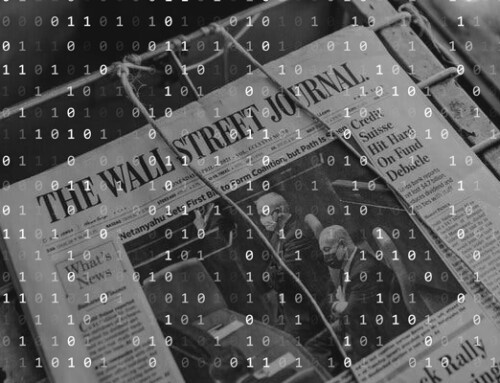Ernesto Garcia
April 30, 2018
Exchanged Traded Funds (ETFs) have been around since 1989. By the end of 2017, global ETF assets totaled $4.569 trillion. The main reason ETFs have become so popular is straightforward—an individual investor can own, through the ETF, a basket of assets that would otherwise be very expensive to replicate in the open market. Moreover, the assets in an ETF reflect the fund’s investment strategy, which usually does not change over the life of the fund. Individuals can effectively adopt the fund’s strategy, knowing it will not suddenly change in a way that no longer reflects his or her preferences concerning risk and return, sectoral and geographic balance, etc. ETFs are like mutual funds in this respect. In both cases, investors are considered passive—they are not actively buying and selling shares of stocks.
What separates ETFs from mutual funds is that, as the name suggests, ETFs are traded on exchanges like any other stock while mutual funds require membership in the institution that owns the fund. Another advantage is that ETFs require only a one-share investment while mutual funds restrict an investors’ minimum investment (almost always much higher than a single share of an ETF). Finally, and perhaps most importantly, mutual funds are only traded after the market closes, and this trade is done directly with the fund itself. ETFs are traded all day like any other stock. Thus, a mutual fund investor wanting to react quickly to intraday news, financial or otherwise, cannot do so. This can only be done at the end of the trading day while an ETF investor can buy or sell shares throughout the day.
How do ETFs Work?
ETFs are traded on exchanges just like individual equities and have similar attributes. Like stocks, they have a quoted price and a certain number of outstanding shares. Multiplying the price by the number of shares yields the market capitalization (market cap) of the ETF. Unlike the stock of a company, however, this market cap does not tell the full story of the value of an ETF’s shares. To understand why it is helpful to know how such shares are created.
Consider the SPDR (Standard and Poor Depository Receipts) S&P (Standard & Poor) 500 ETF Trust, known by its ticker symbol SPY. Owned and operated by S&P Global, it is the largest ETF in the world with an investment strategy that attempts to mirror movements in the S&P 500 index. If the S&P 500 index weights the stock of Apple at 3% of its value, then Apple will make up 3% of the basket of assets the SPY fund holds and similarly for all 500 components of the S&P.
However, ETFs do not purchase shares of stock (or other assets) directly in the open market. Rather, the ETF creates and redeems shares using an entity called an Authorized Participant (AP). Like a market maker, APs can buy and sell very large volumes of assets. The AP buys shares of the underlying assets on the open market and then the AP will trade this portfolio of underlying assets for shares of the ETF which the AP can then sell on the open market. In our example, S&P Global creates SPY shares while one or more APs purchase shares of companies included in the S&P 500 index. The AP will then exchange this portfolio of shares in the S&P 500 index for SPY shares in a process called creation. The opposite of creation is redemption. Redemption occurs when the AP purchases SPY shares in the open market and then exchanges these for a portfolio of shares corresponding to the S&P 500 index. These shares can then be sold by the AP in the open market and the redeemed ETF shares are retired. The AP chooses when they want to create or redeem shares of the ETF. This process of redemption and creation is what allows the ETF to be traded like ordinary shares of stock.
The price of ETF shares fluctuates during the trading day, just like any other ordinary share of stock, altering the market cap of the ETF. However, this is not necessarily the value of its underlying assets, or Assets Under Management (AUM), which also fluctuates during the trading day (since the underlying assets are individually traded on the open market). Such variation opens the possibility for profitable arbitrage, subject to transactions costs. Typically, APs are the largest potential arbitragers. Thus, if the market cap of the ETF falls below the corresponding AUM, a trader can buy low and sell high, purchasing ETF shares and simultaneously selling the corresponding AUM portfolio for a net gain. Few individual investors will act this way—they are, after all, typically passive investors. However, there is a segment of active investors in ETF funds constantly on the lookout for opportunities to buy low and sell high. This can be a good thing for the passive investors who count on the fact that the value of their ETF shares accurately reflects the value of the underlying shares they indirectly own.
Advantages of ETFs
The biggest advantage of an ETF for the typical retail investor is the low transaction costs associated with owning them. Fees paid for ETFs are generally much lower than those for mutual funds. Trading is also less costly since one pays the same amount to purchase a share of an ETF as it would cost to purchase the share of any company’s stock. Another advantage is that the minimum investment required is the price of one share of the ETF. This allows a retail investor to get the advantages of diversification at a price far lower than what it would cost to purchase the actual portfolio of underlying shares or the minimum investment required for a mutual fund. ETFs are traded throughout the day so retail investors can make investment decisions whenever the market is open rather than just at the end of the day as with mutual funds. Such trading allows arbitragers to keep the price of an ETF share close to the value of the underlying assets (AUM). Investors can also sell short or buy on margin.
Drawbacks of ETFs
While ETFs are intended to be passive investment instruments, the existence of active trading can be a source of instability. To highlight this, consider the following scenario. Currently, Apple shares constitute 4% of a SPY share. Suppose Apple reports unexpectedly low earnings causing the stock to sell off. The S&P 500 index only rebalances once every quarter, so even though Apple’s stock has fallen in price, Apple still maintains a 4% weight in the index and hence 4% of the SPY. Then, because the fall in the price of Apple’s stock lowers the value of the SPY’s underlying assets, it can cause SPY shares to be overvalued relative to the S&P 500 it is tracking. The AP, which holds a large number of shares of the SPY, will start selling the overvalued shares. A resulting price decline may cause other holders (such as retail investors) to start selling as well. If the price of SPY were to fall below its underlying asset, the AP will reverse direction, redeeming SPY shares from the fund for shares of the underlying stocks, and selling them on the open market. This, in turn, puts downward pressure on the price of those shares and so a cycle can develop even though SPY, like all ETFs, is meant to be a passive investment vehicle.
In our example, selling pressure on Apple’s stock has spread throughout the market via the seemingly passive ETF. Passive ETF investors usually ignore intraday fluctuations since they are long-term investors. However, ETFs allow for active trading and the process of creation and redemption together with active trading can lead to market contagion from a single stock’s price action. Since ETFs are such a large asset class now, this drawback cannot be ignored. Our Apple stock scenario could become more widespread especially as more investors purchase ETFs not knowing what the underlying assets are. Another concern that one must think about is events where market liquidity dries up. We assume arbitragers and the AP can simply buy and sell shares of the underlying ETF. But what if they cannot do it without causing a massive move in price?
An example of this occurred with the recent sell-off in the Daily Inverse VIX Short-Term ETN (Exchange Traded Note). ETNs are a type of unsecured, unsubordinated debt security and trade on exchanges just as ETFs do. The big similarity worth highlighting between the two is how retail investors easily trade them without much knowledge about trading debt. The VIX index (a popular measure of the stock market’s expectation of volatility implied by S&P 500 index options) increased by a large amount on February 5 of this year and caused the Daily Inverse VIX Short-Term ETN to drop over 80%. Not only did long-term investors in this ETN experience heavy loses, but there also appeared to be an associated overall market sell-off during the following week. While this was a leveraged ETN, it was very small compared to many of the other ETNs and ETFs in the market right now. What would happen if Apple experiences a major sell-off? These are questions that need to be raised and discussed as investor flows into ETFs continues to rise in the future.






